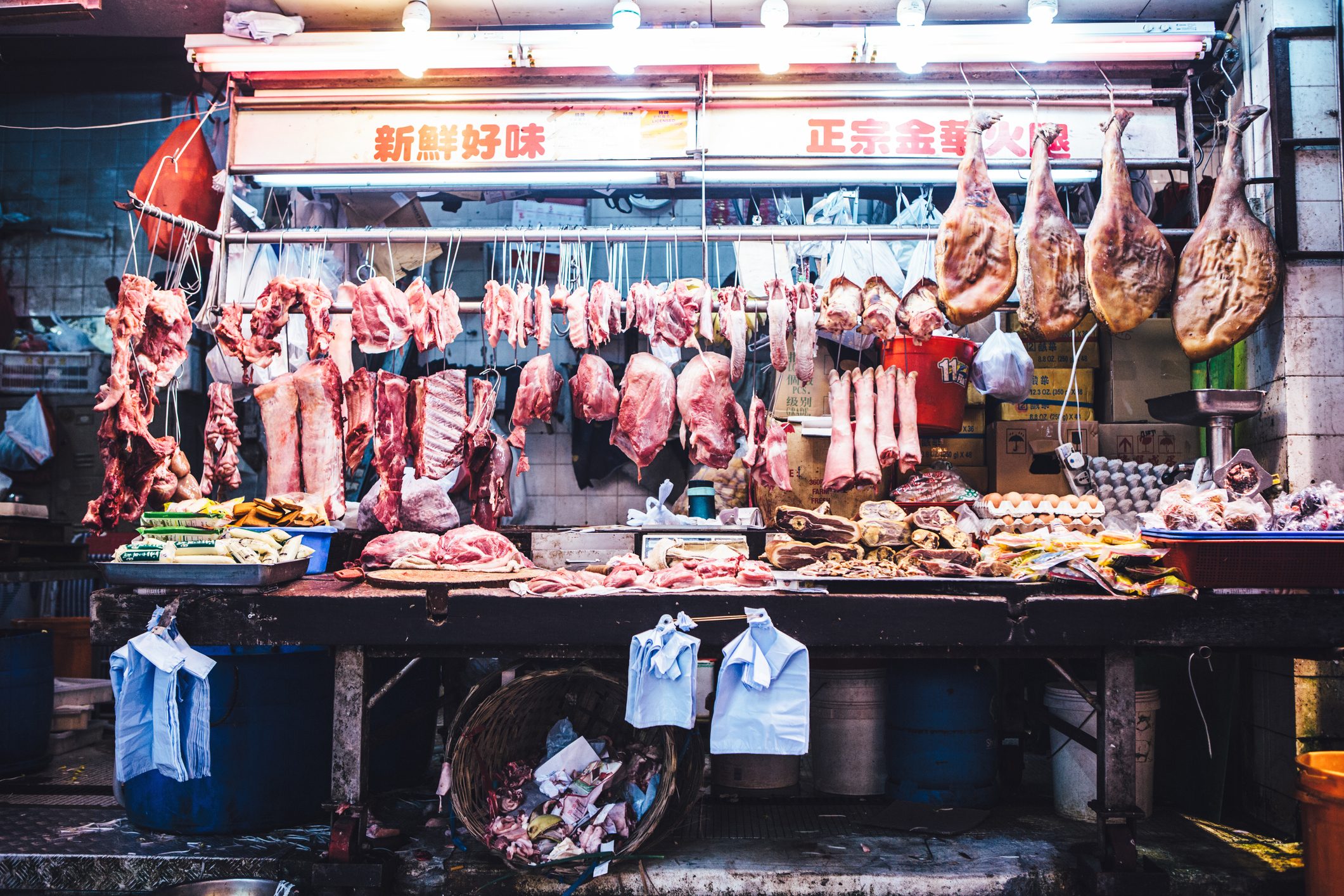;)
SARS-CoV-2 is the name of the virus responsible for the current outbreak. It causes coronavirus disease, or COVID-19, an abbreviation many of you have seen by now. The virus is zoonotic, meaning it can transfer from animals to humans. As with many other viruses, it originated in bats, and it’s therefore thought to have emerged from an animal host.
At the center of the coronavirus discussion, is a wholesale seafood market in Wuhan, China. But seafood was not the only product being sold at the market. Other wildlife such as bats, bamboo rats, and snakes were also on sale. Journalists posted a video that showed numerous wildlife on display, and some were even slaughtered in front of potential customers. The animals were kept in close proximity with fresh meat, as well as with humans. This makes an ideal scenario for the zoonotic coronavirus to transfer from animal to human.
It is estimated that approximately 75% of infectious diseases that occur in humans, originate from animals. The animals most often implicated in this transfer of disease, are bats. In fact, authorities are almost certain now that the COVID-19 virus originated in bats. It was then transferred to other animals via the bat’s feces. It’s currently believed that the density of humans and animals in the Wuhan market, together with the poor hygiene standards posed the ideal environment for the virus to be transferred from the infected animal to a human. Although an animal was the original source of the virus, it rapidly spread from person to person. This is because people in densely populated places had a higher likelihood of coming into contact with the virus. In February 2020, China imposed a ban on buying, selling, and eating of wild and exotic animals. This decision came because of the dangers associated with consuming wild animals and its inherent danger of carrying disease. However, due to the strong cultural connection with wildlife and exotic animals, there is still uncertainty as to how this ban will be regulated or controlled.
The virus can be spread when an infected person sneezes or coughs. Keep in mind that these droplets can also spread to surfaces that might be touched by others. This is why the main prevention message so far has been to wash your hands and to avoid touching your face.
For a update on confirmed cases and the death toll of COVID-19, you can follow Business Insider: https://www.businessinsider.com/coronavirus-in-charts-covid-19-symptoms-spread-deaths-warnings-2020-2?IR=T
References
https://www.cdc.gov/onehealth/basics/zoonotic-diseases.html
https://www.businessinsider.com/wuhan-coronavirus-sars-bats-animals-to-humans-2020-1?IR=T
https://www.cdc.gov/coronavirus/2019-ncov/summary.html
;Resize,width=767;)
